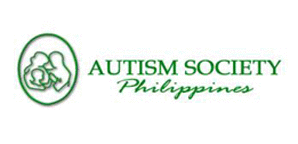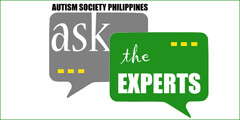Cindy D. Canceko-Llego, MD
The Philippine International Convention Center was the venue of a gathering of international and local autism experts, parents, doctors, teachers, therapists and other professionals who all participated in the International Autism Conference from February 3 to 5, 2010. To date, it was the largest autism-focused conference to be held in Asia and had esteemed speakers coming from the M.I.N.D.(Medical Investigation of Neurodevelopmental Disorders) Institute of the University of California-Davis, Autism Speaks and other institutions in the forefront of scientific research in autism.
The conference clarified what is the current evidence-based knowledge on autism by presenting results of research studies on the many different facets of this disorder. Autism Spectrum Disorder (ASD) is a behaviorally-defined condition characterized by impaired social interaction, delayed or disordered language, and a restricted range of interests. Current scientific knowledge of ASD can be summarized in a figure presented by Dr. Laura Klinger in the first plenary lecture of the conference.
 |
| The figure shows that there are genetic mutations seen in some individuals |
The figure shows that there are genetic mutations seen in some individuals which predispose them to have atypical brain structure and function. These brain-based differences lead to an unusual way of processing information which in turn can manifest as unusual behaviors.
Since these unusual behaviors are what we see in everyday situations as parents or professionals working with ASD individuals, behavioral manifestations were discussed in detail on the first day of the conference. Dr. Klinger reiterated that although individuals with autism vary widely in presenting problems, they commonly lack particular behaviors that all parents should observe in their children during the first few years of life: joint attention, imitation and pretend play. She then presented updates on standardized assessment tools that can be used by doctors, psychologists and other professionals trained in autism to organize their behavioral observations and to help refine the process of diagnosis.
Dr. Margaret Bauman discussed how certain behaviors can arise from concurrent medical problems in the neurologic, gastrointestinal, endocrinologic or genitourinary systems, emphasizing the need for a full medical examination. Bizarre behaviors can be manifestations of pain or discomfort in ASD individuals who may be unable to communicate how they feel.
Early identification of ASD is crucial in beginning the appropriate intervention. Dr. Sally Rogers presented findings from her landmark long-term study of siblings of ASD individuals, some of whom develop ASD themselves. She discussed how atypical behaviors suggestive of ASD can be observed even in infants less than a year old, challenging the notion that the onset of symptoms is around 1 ½ to 2 years. Adolescents and adults, on the other hand, can have more subtle behavioral features. Thus, information about
From the extensive discussion of ASD behaviors on Day 1, the conference then proceeded to a discussion of their possible roots in genetics and brain structure. Dr. Brett Abrahams discussed the discovery and significance of a genetic mutation in some cases of ASD, although he reiterated that such genetic markers are yet to be fully understood. Dr. David Amaral’s lecture on the neurobiology of autism provided updated evidence of atypical brain structure and function, strengthening the idea that ASD is brain-based. He also discussed the increasingly popular notion that immunologic dysfunction, such as the formation of maternal antibodies during pregnancy against a baby’s brain, is associated with changes in brain development.
A lecture on language development in autism by Dr. Helen Tager-Flusberg likewise provided evidence of differences in brain structure among those with the language impairments commonly seen in ASD. The greatest implication of these genetic and neurobiologic studies is that if we pinpoint the cause of ASD, we might be able to develop a cure for this condition. However, it has become increasingly apparent from these studies that the cause can be as varied as the spectrum of manifestations in ASD. This inherent heterogeneity among individuals diagnosed to have this condition contribute to difficulties in making strong scientific conclusions about its nature. Indeed, there is a need for more community-wide studies on autism. Dr. Young-Shin Kim demonstrated the impact of conducting an epidemiologic study in one’s own country.
Day 3 of the conference saw the discussion of the remaining link in the chain of events in ASD-- cognitive processing. Dr. Peter Mundy presented how the lack of joint attention in a young child with ASD leads to a different way of processing the information he gathers from people and things around him. Dr. Nirit Bauminger likewise discussed how the processing of social information can be problematic for ASD individuals.
Having armed the conference participants with extensive knowledge of the what, why and how of ASD, the program then proceeded to discussions on what can be done for individuals with this condition. Interventions currently proven to be the most widely effective were presented at length. Dr. Laura Schreibman discussed the principles and strategies of behavioral management, while Dr. Bauminger gave details of social skills training. The conference then concluded with an interactive discussion with the representatives of Autism Speaks: Dr. Andy Shih, Mr. Michael Rosanoff and Ms. Dana Marnane. The purpose of the interactive session was to launch the Global Autism Public Health Initiative (GAPH) in the Philippines. The GAPH is an international advocacy effort aiming to increase awareness, facilitate research and improve services for autism in each collaborating country using strategies tailored for the local setting.
Participants in the International Autism Conference went home armed with a better understanding of the complex nature of autism. Although there is so much more that needs to be discovered and understood, we can find peace and hope in the knowledge that the continued collaboration of people from different walks of life will surely help us in finding soon the answers that we need.



 Posted in:
Posted in: 

0 comments:
Post a Comment